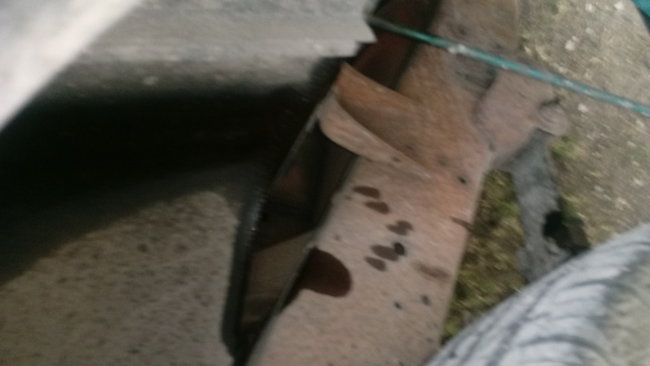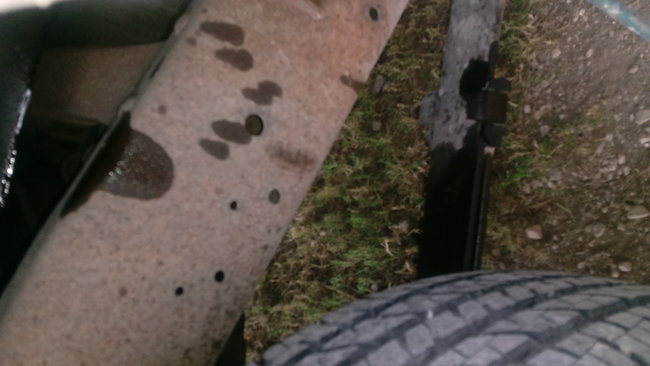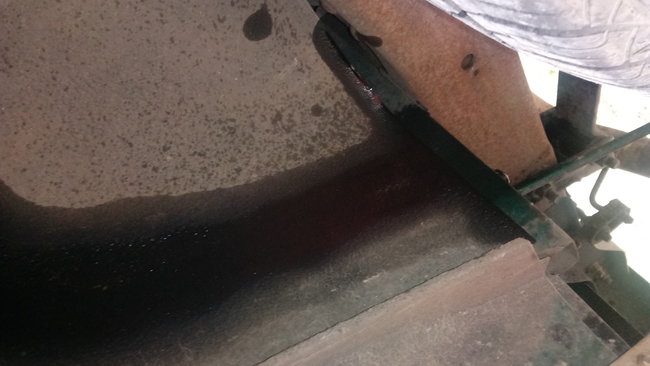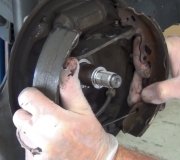Thursday, August 24th, 2017 AT 7:14 AM
Brake light on dash
1 Reply
Hold on a minute. You said the "oil level was low", so you added some. Please be very specific. Did you add brake fluid or some type of oil? Did you add it to the brake fluid reservoir or the engine? If you added any type of petroleum product, like engine oil, transmission fluid, or power steering fluid, to the brake fluid reservoir, we have really big problems, and due to the truck's age, it may be not worth repair. If this is simply a terminology issue, then the leak you observed is the suspect. I have to comment on the term "oil" for the benefit of other people reading this when researching their own problem. Petroleum products must never be added to brake fluid. It will swell the rubber parts and lead to all kinds of failures. The repair is to replace every part that contains rubber parts that contact the brake fluid, after flushing and drying all the steel lines. That includes front calipers, rear wheel cylinders, master cylinder and the seal under its cap, all the rubber flex hoses, the combination valve, and if the vehicle has anti-lock brakes, the hydraulic controller. Trucks and minivans typically have a rear height-sensing proportioning valve due to the variety of potential loading conditions. Those have rubber o-rings so they must be replaced too. If any rubber part is not replaced, the petroleum will leach out of it and recontaminate the new brake fluid.
I appreciate the photos, but I can't tell what is leaking. If it's near the right rear wheel, it is going to be the wheel cylinder or the steel line going to it. That line sits on top of the axle housing. If the line has rusted through, you will see brake fluid spurt out when a helper pushes the brake pedal. The fluid will run to the bottom of the housing, then onto the ground.
If the wheel cylinder is leaking, the brake drum and backing plate will be wet, as well as the inside of the tire. If that leak is bad enough, fluid will spray from the spinning brake drum onto the inner wheel well. You probably will not see additional fluid running out when your helper pushes the brake pedal. It takes a little while for it to run down that far.
Regardless of the cause, the red "Brake" warning light will turn on due to unequal pressures in the two halves of the hydraulic system. That light will turn off once the leak is repaired, ... Unless the master cylinder has been damaged. On any master cylinder that is more than about a year old, crud and corrosion build up in the bores where the pistons don't normally travel. When you push the brake pedal all the way to the floor, either when surprised by a leak or during improper bleeding procedures, the pistons are run over that crud and it can rip the rubber lip seals. That will cause a slowly-sinking brake pedal, and that often doesn't show up for two or three days. If it looks like the master cylinder is still okay, just use gravity-bleeding after the leak has been repaired. If you resort to pedal-bleeding with a helper, be sure to stress they never push the brake pedal over halfway to the floor.
I appreciate the photos, but I can't tell what is leaking. If it's near the right rear wheel, it is going to be the wheel cylinder or the steel line going to it. That line sits on top of the axle housing. If the line has rusted through, you will see brake fluid spurt out when a helper pushes the brake pedal. The fluid will run to the bottom of the housing, then onto the ground.
If the wheel cylinder is leaking, the brake drum and backing plate will be wet, as well as the inside of the tire. If that leak is bad enough, fluid will spray from the spinning brake drum onto the inner wheel well. You probably will not see additional fluid running out when your helper pushes the brake pedal. It takes a little while for it to run down that far.
Regardless of the cause, the red "Brake" warning light will turn on due to unequal pressures in the two halves of the hydraulic system. That light will turn off once the leak is repaired, ... Unless the master cylinder has been damaged. On any master cylinder that is more than about a year old, crud and corrosion build up in the bores where the pistons don't normally travel. When you push the brake pedal all the way to the floor, either when surprised by a leak or during improper bleeding procedures, the pistons are run over that crud and it can rip the rubber lip seals. That will cause a slowly-sinking brake pedal, and that often doesn't show up for two or three days. If it looks like the master cylinder is still okay, just use gravity-bleeding after the leak has been repaired. If you resort to pedal-bleeding with a helper, be sure to stress they never push the brake pedal over halfway to the floor.
Was this helpful?
Yes
No
Friday, August 25th, 2017 AT 12:18 AM
Related Brake Warning Light Content

Cooling System Pressure Test For Leaks

Code Read Retrieval/Clear Scion




